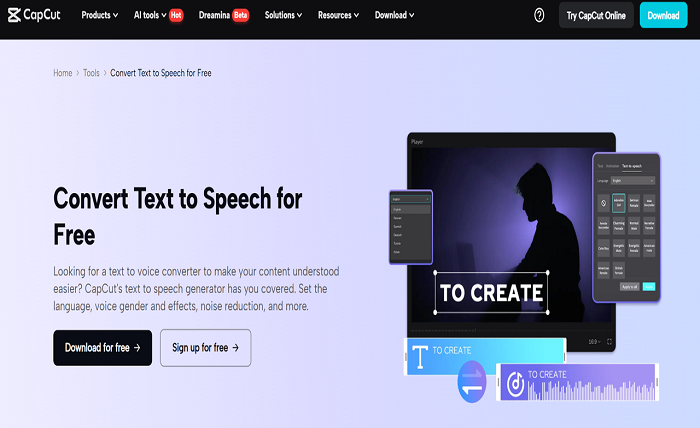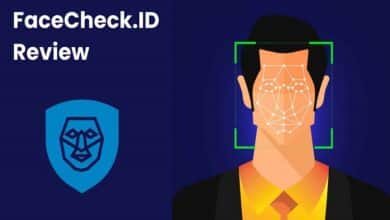News
Human or AI? The Fine Line Between Real and Virtual Voiceovers

In the age of advanced technology, it’s becoming harder to tell whether we’re hearing a real person or an AI-generated voice. The world of voiceovers has seen huge changes, thanks to the rise of artificial intelligence. Whether you’re listening to a commercial, a YouTube video, or even an audiobook, AI voiceovers are becoming more common, and they sound almost exactly like human voices.
The use of text to speech AI has made it possible for anyone to generate a voiceover from written text in just a few clicks. As technology continues to improve, the lines between real human voices and AI-generated voices are becoming more blurred. In this post, we’ll explore how AI is changing the voiceover industry, how it compares to human voices, and how tools like AI voice generator and AI video upscaler are helping creators everywhere. We’ll also show you how to use CapCut’s AI tools to create your own voiceovers in just three simple steps.
The Rise of AI Voiceovers
Voiceovers have always been an important part of media, from radio to television and movies. In the past, voiceovers were only performed by talented voice actors. These professionals could change their tone, pitch, and delivery to match the character or message they were portraying. But today, technology is catching up. AI-driven tools like text to speech AI are making it easier for content creators to add voiceovers to their work without needing a professional voice actor.
AI voiceover technology works by turning written text into spoken words using artificial intelligence. These systems are trained to sound as natural as possible, mimicking the way real humans speak. The more data these AI tools are trained on, the better they get at producing voices that sound realistic and emotional.
Human Voice vs AI Voice: What’s the Difference?
While AI-generated voices have come a long way, there are still a few differences that set them apart from human voices. One of the biggest differences is the emotional depth and natural flow that a human voice can bring to a performance. Voice actors have the ability to convey emotions like joy, sadness, excitement, and anger through their tone and delivery. They can also improvise or change their performance based on the context of the scene, something that AI still struggles with.
On the other hand, AI voiceovers are more consistent. They don’t get tired, and they don’t need to take breaks. AI-generated voices can also be scaled to suit different languages and accents without needing additional training or effort. With the rise of AI voice generator tools, it’s possible to create voices in multiple languages or dialects, making it easier for global audiences to access content.
However, there are still some subtle cues that give away an AI-generated voice. While AI is good at mimicking human speech patterns, it can sometimes sound robotic or stiff. Small details like uneven pauses, unnatural pacing, or a lack of emotion can make it clear that the voice isn’t human.
The Ethics and Impact of AI Voiceovers
As AI voiceovers become more common, there are important ethical considerations to keep in mind. For example, AI can be used to create deepfake audio, which is when someone’s voice is mimicked without their permission. This could lead to impersonation, misinformation, or even fraud. Some voice actors worry that their jobs might be replaced by AI, leading to a loss of income for many professionals.
Moreover, the ability to create AI voices that sound like anyone raises questions about ownership and consent. Who owns a voice? And can someone else profit from using your voice in an AI-generated format? These are questions that the industry will need to address as AI voiceovers become more widespread.
Using CapCut’s AI Voice Generator: A Quick Guide
Creating a voiceover for your video or content has never been easier. With tools like CapCut’s AI voice generator, you can create realistic voiceovers in just a few simple steps. Whether you’re making a YouTube video, a TikTok, or any other type of content, CapCut’s AI tools can help you save time and effort.
Here’s how to use CapCut’s AI voice generator in three simple steps:
Import Video
First, open CapCut’s desktop version and create a new project. Import the video or media file that you want to add a voiceover to.

Use Text to Speech AI
Next, click on the “Text” tab, and type out the script or text you want the AI to read. After typing your text, select the “Text to speech” option. Choose the voice and language you prefer from the list, and the AI will generate a voiceover based on the text you provided.

Export Video
Once you’re happy with the voiceover, click on “Export” to save the video. You can now share your video with your audience, complete with a high-quality AI-generated voiceover.

By using CapCut’s easy-to-use tools, you can create professional-quality voiceovers without the need for a voice actor or expensive equipment. The text to speech AI feature makes it easy for anyone to generate voiceovers with just a few clicks.
Enhancing Your AI-Generated Content
While AI voiceovers are a great way to enhance your content, there are other ways to improve your videos as well. One of the most useful tools for video creators is the AI video upscaler that helps to enhance the quality of your videos by improving resolution and clarity. Whether your video was shot in lower resolution or you simply want to make it look sharper, an AI video upscaler can take your visuals to the next level.
By pairing a high-quality AI voiceover with an enhanced video, you can create engaging and professional-looking content that will capture your audience’s attention. CapCut’s AI video upscaler makes it easy to upscale your video without needing specialized software or knowledge. With just a few clicks, your video can look more polished and visually appealing, helping you stand out in the crowded world of online content.
The Future of AI Voiceovers
As AI technology continues to advance, we can expect even more realistic and diverse voiceovers. From creating personalized voices for brands to offering better accents and languages for global audiences, AI has the potential to transform how we produce content. However, it’s important to balance innovation with ethical considerations, ensuring that AI is used responsibly.
In the future, we might see AI voiceovers being used more widely in movies, TV shows, and video games. While it’s exciting to think about the possibilities, it’s essential to remember that human creativity and emotion will always play an important role in storytelling. AI can enhance our content, but it should complement human voices, not replace them.
Conclusion
The rise of AI voiceovers is changing the landscape of content creation. From accessibility to scalability, AI offers many benefits for creators, but it also comes with challenges and ethical concerns. As AI continues to improve, the lines between real and virtual voices will blur even further. Whether you’re using text to speech AI, an AI voice generator, or an AI video upscaler, these tools are helping creators produce high-quality content quickly and easily.
In the end, the balance between human and AI voices will likely depend on how we use them. AI may be a great tool for efficiency and creativity, but there will always be something special about the emotional connection that a human voice can create.





